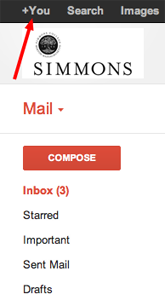 Recently, the Infrastructure & Online Services group completed a significant upgrade to the space we use to store faculty and staff email. As a result, all faculty and staff now have 1 gigabyte of storage for their email with more available by request. This represents a fivefold increase over the previous mailbox quota.
Recently, the Infrastructure & Online Services group completed a significant upgrade to the space we use to store faculty and staff email. As a result, all faculty and staff now have 1 gigabyte of storage for their email with more available by request. This represents a fivefold increase over the previous mailbox quota.
The upgrade to storage space was completed in tandem with the continued effort to virtualize servers and services at Simmons. Virtualization allows us to be more flexible with storage space, in effect, allocating the space where and when we need it most. It also makes backing up the content of our servers more effective and provides increased opportunities for helping you to retrieve lost or accidentally deleted files when emergencies arise. In addition, all data on our servers is constantly replicated to our auxiliary data center that provides up-to-the-second data redundancy.

Increased email storage for faculty and staff also creates an additional long-term benefit as we upgrade current systems. In FY14, we will roll out a new and improved email platform for faculty and staff. In preparation, we recommend that all faculty and staff take advantage of the increased email quota by storing their email on the Simmons servers rather than on their computer’s hard drive. Email stored locally on your computers and mobile devices can be very difficult (or, in some situations, impossible) to restore in the event of a system crash, and keeping it on our servers allows us to better assist you in finding and retrieving data. During the transition, we will help you migrate any email that is currently stored on Simmons servers to the new platform.
If you have questions about email storage or how to set up your email client (e.g. Thunderbird, Outlook, Apple Mail) to keep mail on the server rather than on your computer, you can contact the Service Desk at 617-521-2222. We’ll be happy to answer your questions and help you configure your email.


